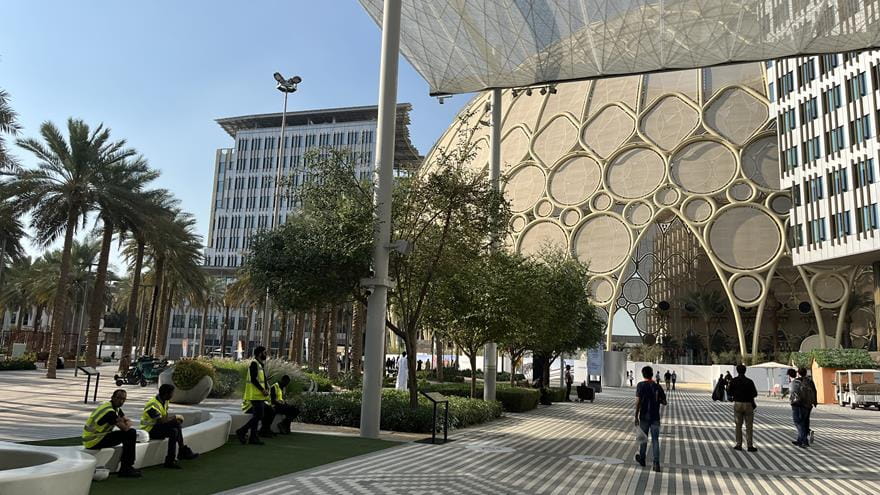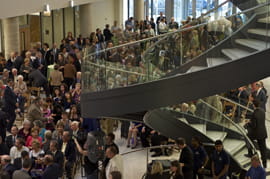The Future of Science

- Students, Faculty Represent Drexel University at COP28 Through Dialogue and Research
- STAR Summer Showcase Exhibits Advanced Research From 121 Undergraduate Students
- Drexel Students, Research Community Made Their Mark on 2023 AAAS Meeting
- Drexel Students Write Songs About Biodiversity for ‘Anthems for the Anthropocene’ Contest

The Papadakis Integrated Sciences Building (PISB), designed by world-renowned Diamond and Schmitt Architects, has officially opened its shiny new doors.
The 150,000-square-foot structure at the corner of 33rd and Chestnut Streets is the new home of the Drexel’s Department of Biology, and an important step forward for scientific research efforts at the University. A special dedication took place Tuesday, September 20, with Drexel trustees, executive staff and the family of the late Dr. Constantine Papadakis, the new building’s namesake.
"The Papadakis Integrated Sciences Building will play a major role in what might be a golden age in biology and life sciences teaching and research at Drexel," said President John A. Fry at the dedication.
In May 2009, Drexel’s Board of Trustees unanimously approved naming the Integrated Sciences Building in honor of the late president for his legacy of innovation and excellence. The University community joined Interim President Chuck Pennoni and the Papadakis family for the ceremonial groundbreaking in November 2009.
This new facility will be Drexel’s first building to be Silver LEED-certified; it is also anticipated to receive at least a 3 Green Globes® rating from the Green Building Initiative. The building houses 44 research and teaching laboratories for biology, organic chemistry and biomedical engineering, lecture halls, a 250-person auditorium and, perhaps most notably, a five-story biowall, which serves as a living air filter. Contaminated air is drawn into the water trickling behind the biowall. From the water, microbes in the plant roots take up and remove particulates and volatile compounds. Additionally, faculty and student researchers will study the wall for its potential health benefits. Drexel is the first university in the United States to have such a feature on campus.
The PISB aims to increase the quality and diversity of the student laboratory and classroom experiences, facilitating future leaders in the biology, biotechnology, environmental science, life science and pharmaceutical industries.
To view photos from the opening and dedication, click here.
To learn more about the biowall, click here.
Drexel News is produced by
University Marketing and Communications.